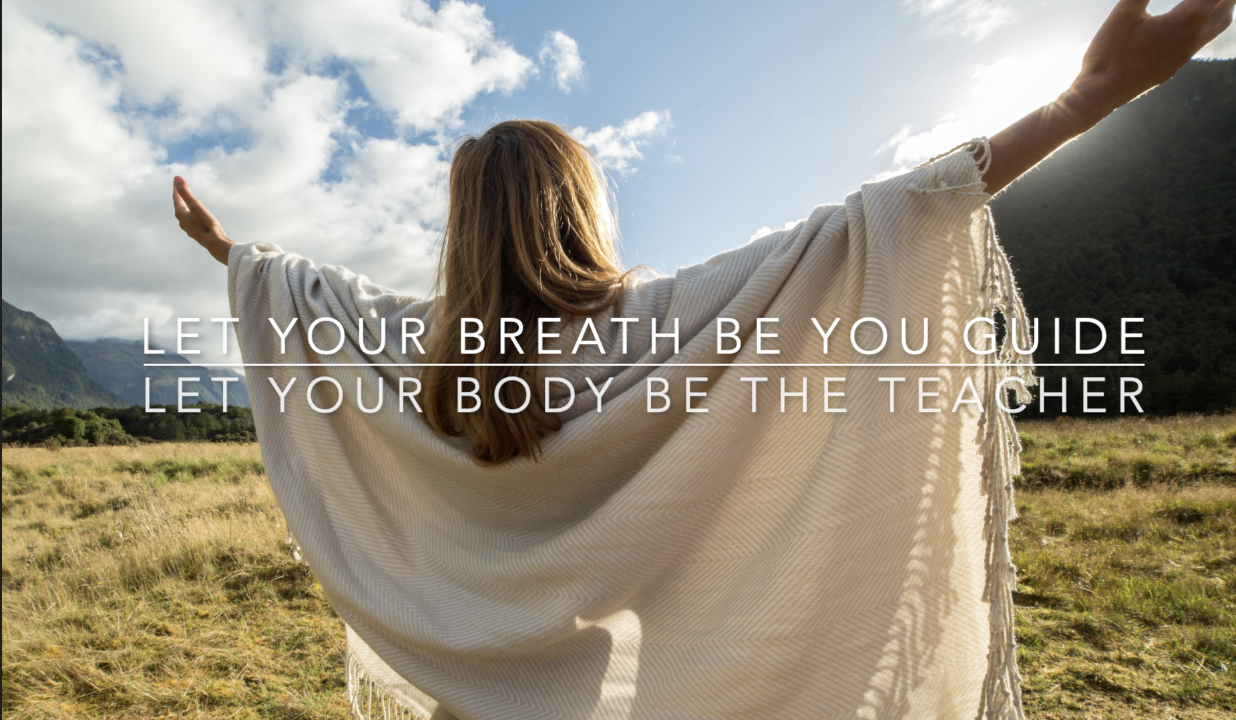Breath as Medicine: The Power of Less
Image from Living Yoga Course, Sue Dawson- Sense Greater Peace
Featuring reflections on James Nestor’s “Breath,” Leon Chaitow’s legacy, and my own lived experience of breath as healing
A New Way to Breathe (That We Once Knew All Along)
When I first read Breath: The New Science of a Lost Art by James Nestor, I felt as though someone had taken a lot of my life’s embodied knowing and put it into words. The book is a deeply-researched exploration of how modern humans have forgotten how to breathe—and how this has quietly disrupted everything from posture to sleep, anxiety to immunity, energy to facial structure.
But here’s what struck me most:
Healing doesn’t come from breathing more—it comes from breathing less.
Less volume. Less speed. Less strain.
And more rhythm. More awareness. More presence.
Please remember there are always nuances and other perspectives and dimensions to every truth, it depends on the lens you are starting from. Happy to discuss, if you have any queries.
At Sense Greater Peace, this is what we practise daily.
And now, with the release of my 5:5 Breath Practice on Insight Timer, I invite you to explore it with me.
🔗 [Listen to my 5:5 Breath Practice on Insight Timer]
This is free to paid memebers of InsightTimer
Or listen on my website for FREE HERE
My Breath Story – Where It All Began
Thirty years ago, during the birth of my first child, I had no pain relief—only my body, my instincts, and my breath.
I found myself raising my hand in front of me, almost like a conductor leading a symphony. The motion helped me pace and guide my breath. As long as I was in that rhythm, I could ride the waves. But the moment I lost the breath—and lost the hand cue—the pain returned tenfold.
That moment changed everything.
It planted a seed of wonder: What if breath wasn’t just survival, but a healing art?
Over the years, I had noticed this pattern in sport, movement, dance, teaching, and life. Whether running or dancing, leading yoga or Pilates, or giving energy treatments—when I was in rhythm with the breath, I was in rhythm with life, and the same for my clients.
What James Nestor Reveals
In Breath, Nestor travels through science, history, and personal experimentation to uncover lost breathing techniques—many of which modern medicine is only now validating.
Some key discoveries that align with my breath work:
Breathing less oxygen can deliver more oxygen to your cells.
Overbreathing (common in modern life) reduces oxygen uptake due to the Bohr effect—slower breath enhances it.
5.5 breaths per minute is ideal.
Ancient texts, modern studies, and biometric testing all point to this rate (a five-second inhale, five-second exhale) as the rhythm that restores coherence in body and mind.
Nasal breathing is essential.
It filters, warms, and pressurises the air, helping with oxygenation, immunity, dental health, and even emotional regulation.
Breathing retrains our whole system.
From sleep apnoea to scoliosis, from anxiety to digestion—when breath is restored, our systems respond in kind.
His book offers a scientific echo of what many of us have known intuitively: the way we breathe shapes the way we live.
Honouring Leon Chaitow: A Mentor and Pioneer
Before Nestor’s book reached the masses, I had the honour of studying directly with Leon Chaitow, a pioneer in breathing-pattern therapy. Though he passed away in 2018 , his influence lives on in breath therapy training and therapeutic practice across fields.
Chaitow taught that dysfunctional breathing—often unnoticed—can create tension, postural issues, pain, poor sleep, and emotional imbalance. His multidisciplinary approach combined manual therapy, awareness, and breath re-education, offering grounded, clinical support to restore the breath-body relationship.
His influence continues to ripple through my own teaching, especially in how I pair conscious breath with Reformer work, somatic exploration, and healing practices.
Why “Less” Is a Sacred Practice
Let’s explore this through the four lenses I often return to:
I – The Inner Experience: Breath & Self-Regulation
A slower breath is not just a technique—it’s a homecoming.
It tells your body: You are safe. You are enough. You can rest now.
Whether in childbirth, movement, or meditation, breath brings us into stillness without shutting down. Into aliveness without tension.
We – Shared Breath & Belonging
Breathing in rhythm with others—whether silently or aloud—creates a profound field of resonance. In class, in relationship, in ceremony… we find each other through the breath.
This practice is at the heart of Sense Greater Peace. It builds community not by speaking louder, but by breathing deeper.
It – The Body’s Function: Breath & Form
Your diaphragm, lungs, mouth, sinuses, posture, even your face—these are all shaped by how you breathe. Both Nestor and Chaitow show us how chronic mouth breathing or shallow breath can lead to long-term structural issues—and how retraining breath can restore vitality.
Its – Culture & Environment: Reclaiming a Breath-Centred Life
We live in an over-stimulated world of short breaths and even shorter attention spans. But when we honour the breath as teacher, everything softens. The nervous system, the pace, the expectations. A culture of slowness, rootedness and presence begins to emerge.
And so we begin again… with one breath. Then another. Then five minutes. Then a lifetime.
Begin With Me
If this resonates, I warmly invite you to begin your practice here:
🔗 [5:5 Breath Practice on Insight Timer] or on my website for FREE HERE
7 minutes. Five-second inhale, five-second exhale.
Let it steady you. Let it soften you. Let it return you to yourself.
And if your hand wants to rise—like mine did thirty years ago—let it guide you like a conductor. Not to control the breath, but to meet it.
I would always love to hear from you, if you read this blog and would like to share anything with me.
Breathe • Move • Restore • Flourish
From my heart to yours,
Sue Dawson xxx
Sense Greater Peace

